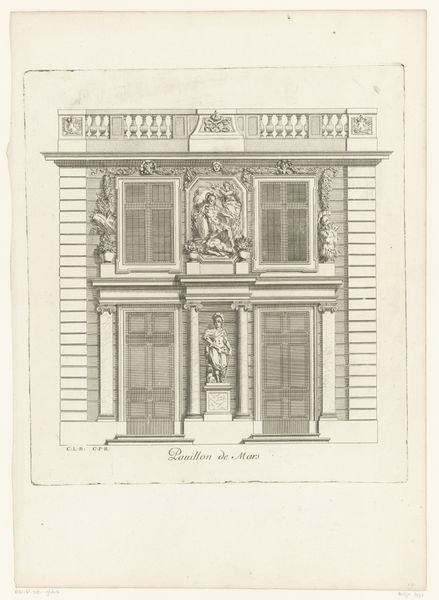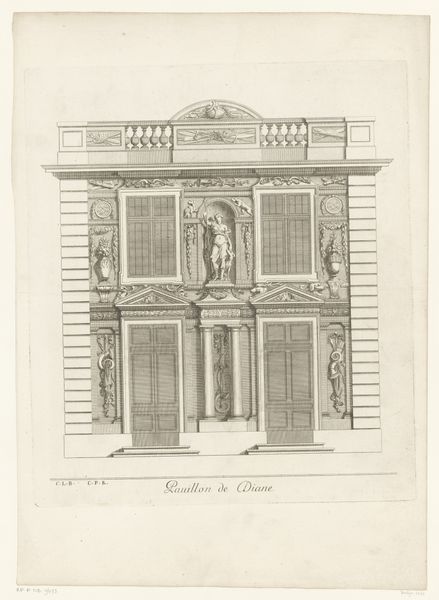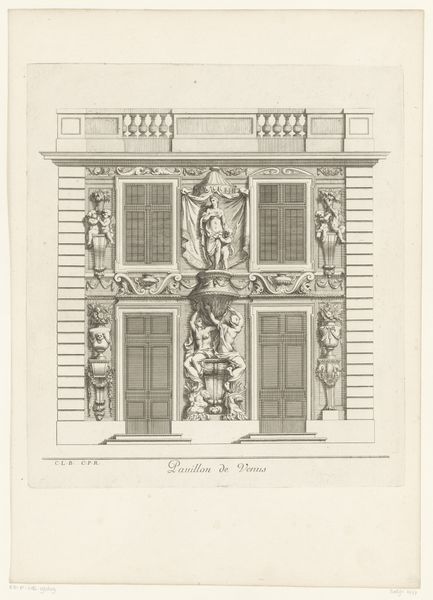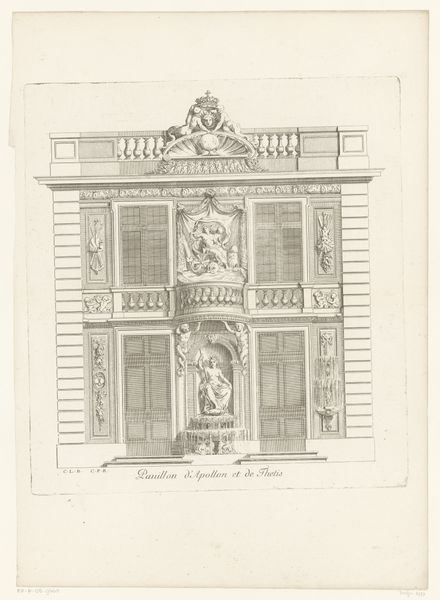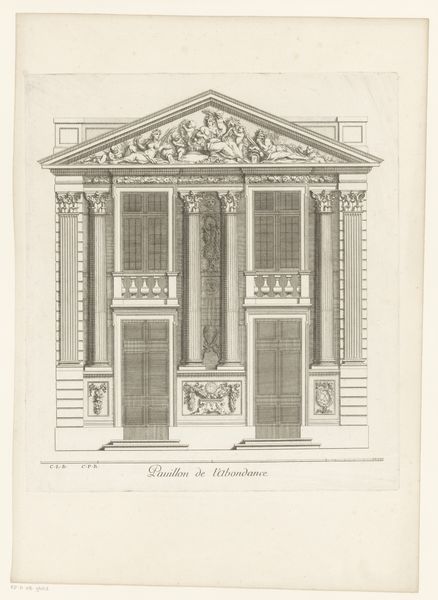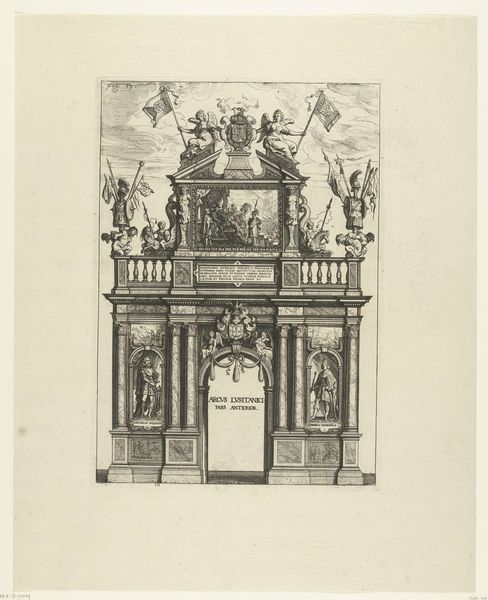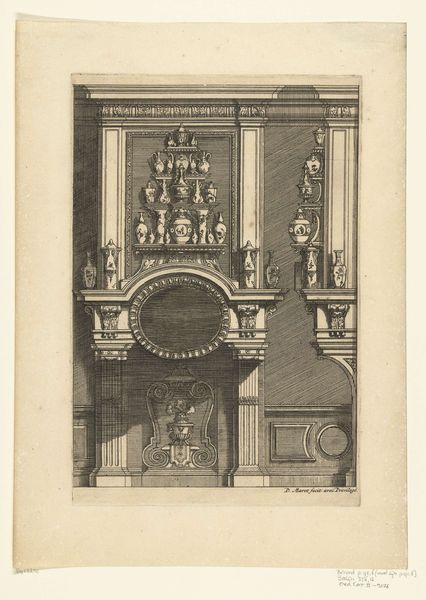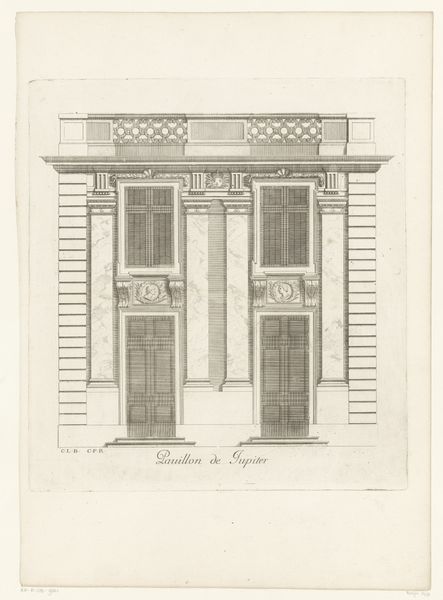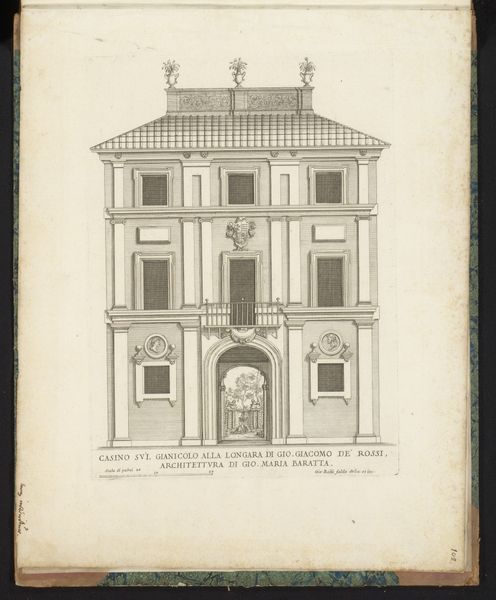
engraving, architecture
#
baroque
#
old engraving style
#
geometric
#
line
#
cityscape
#
engraving
#
architecture
#
building
Dimensions: height 404 mm, width 351 mm
Copyright: Rijks Museum: Open Domain
Louis de Châtillon created this print, "Pavilion of Saturn," during the late 17th or early 18th century, a time when Europe was captivated by classical antiquity. This idealized architectural design reflects the period's fascination with order and symmetry, key components of the prevailing aesthetic. Notice how the rigid, almost stoic figures are positioned around the entrance, invoking the Roman tradition of placing statues of ancestors or gods at prominent locations. The choice of Saturn, the Roman god of time, agriculture, and periodic renewal, adds a layer of meaning, reflecting themes of order, governance, and the cyclical nature of life which would resonate with the aristocratic patrons of the time. Although rendered in a precise, linear style, this pavilion evokes a sense of aspiration, hinting at the emotional and intellectual landscape of the era. Châtillon's architectural fantasy thus captures the epoch’s pursuit of an ideal, harmonious world, framed by classical references and imbued with a sense of timelessness.
Comments
No comments
Be the first to comment and join the conversation on the ultimate creative platform.
